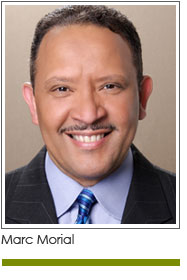 “I'm the fourth Black female from the United States to fly to space, only four of us. And out of the four that have gone, only one person has gone multiple times. I really want to have that message out there that, you know, you can become a pilot. You can go to the stars - but not only for people of color and girls of color, but also for us what I call seasoned individuals. You know, I've been chasing space my entire life, and it took me 50-plus years to get here, but I made it.” – Dr. Sean Proctor, geoscientist, explorer, space artist, and astronaut.
“I'm the fourth Black female from the United States to fly to space, only four of us. And out of the four that have gone, only one person has gone multiple times. I really want to have that message out there that, you know, you can become a pilot. You can go to the stars - but not only for people of color and girls of color, but also for us what I call seasoned individuals. You know, I've been chasing space my entire life, and it took me 50-plus years to get here, but I made it.” – Dr. Sean Proctor, geoscientist, explorer, space artist, and astronaut.
The Inspiration4 mission to orbit earlier this month made headlines as the first completely private space mission in history, and the first to carry an all-civilian crew. But another historic milestone received far less attention: crew member Sian Proctor, a geology professor at Arizona’s South Mountain Community College, became the first Black woman to pilot a spacecraft.
Dr. Proctor’s journey into space at the age of 51 was the culmination of a lifetime’s ambition. Her father worked at the NASA tracking station in Guam during the Gemini and Apollo missions, and she was born there just two weeks before the launch of Apollo 13.
As a teen, she served in the Civil Air Patrol and dreamed the Air Force Academy, but poor vision and the early death of her father thwarted her ambition.
It wasn’t until after she completed her PhD in Science Education in 2006 that her dreams of flight were rekindled. Earning her pilot’s license in just six months, she was inspired to undergo surgery to repair her vision. Space exploration finally seemed within her grasp.
“For the first time, I fit all the requirements,” she told the Arizona Republic in 2009. “I had my PhD, 20/20 vision, and for the first time, NASA would be accepting my community college teaching as qualifying experience. In the past, only K-12 was accepted for astronaut educators.”
Dr. Proctor was chosen as one of 47 finalists, out of more than 3,500 applicants, for the 2009 NASA Astronaut Selection Process. Astronaut Sunita Williams, who then held the record for the most spacewalks by a woman, made the phone call to deliver the disappointing news that she was not selected for the program.
Undaunted, Dr. Proctor became an “analog astronaut” taking part in simulated missions to the moon and Mars. Her four analog missions include the 2013 Hawai’i Space Exploration Analog and Simulation (HI-SEAS) mission to investigate food strategies for long duration spaceflight and missions to the Moon or Mars. Her book, “Meals for Mars” combines images, stories, and recipes highlighting her experiences during the four-month mission.
However, it was her artistic talent and entrepreneurial spirit as much as her scientific knowledge that helped her earn her place on the Inspiration4 crew. As the winner of an online business competition with her art store, “My Space2Inspire”, Dr. Proctor was selected to represent the mission pillar of Prosperity. Billionaire businessman Jared Isaacman, who organized the mission to raise awareness and funds for St. Jude Children’s Research Hospital, represented the Leadership pillar; Hayley Arceneaux, physician assistant at St. Jude and pediatric cancer survivor, represented the pillar of Hope; and Christopher Sembroski, data engineer and Air Force veteran, secured the spot representing the Generosity pillar when a friend who won a random drawing for St. Jude donors declined the prize and offered it to Sembroski.
Dr. Proctor told NPR the mission was “the most amazing, stunning, awesome experience of my life” and she was awed by the view of Earth from space. “Because I went up not only just as a scientist but also as an artist and poet, to me, the Earth became this kind of living painting, this moving, swirling ball. I just couldn't get enough.”
A true example of #BlackGirlMagic, Dr. Proctor believes “we need to actively strive for a J.E.D.I. space: a just, equitable, diverse, and inclusive space as we advance human spaceflight.” Honored earlier this year as one of The Explorers Club 50: Fifty People Changing the World, she said “I get people to think differently about exploration, science communication, and open access to knowledge. I believe it is important to provide access to unique places that most people will never have a chance to experience. We accomplish this through digital technology and science communication.”
Marc Morial is the president and CEO of the National Urban League.











